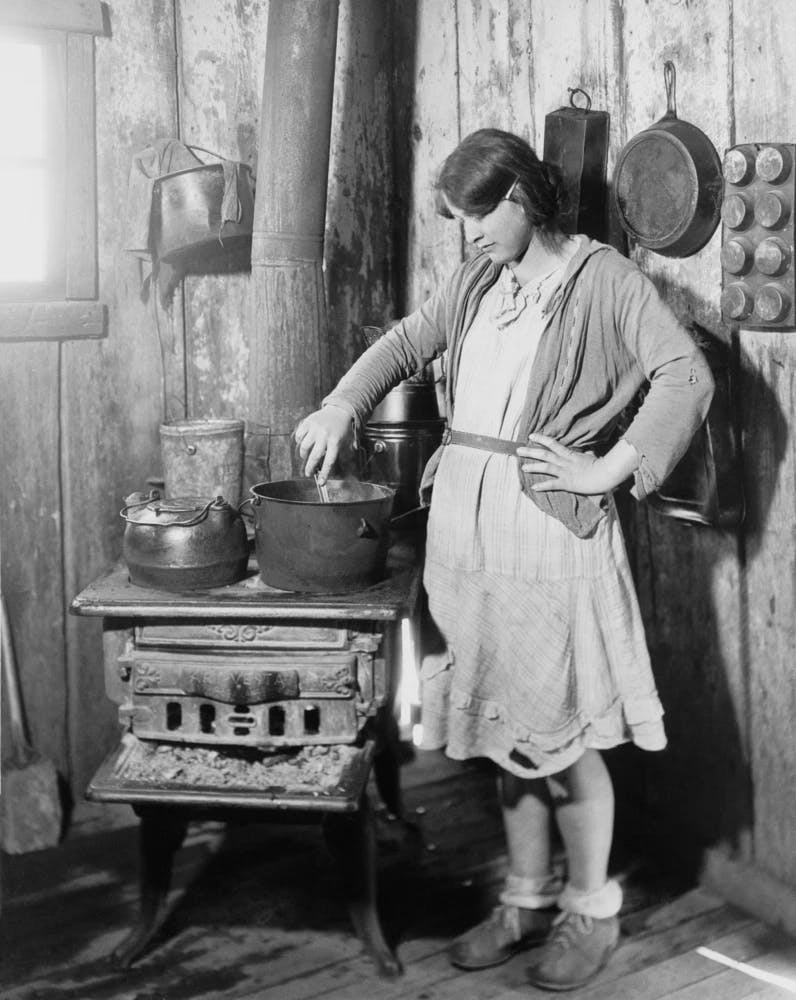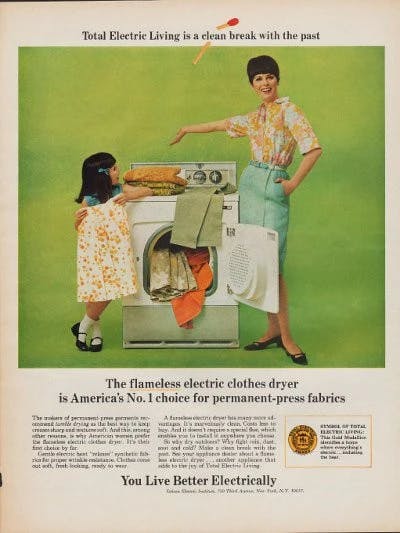Today’s “Empowered Women” Are Weaker Than Women Of The Past
The women of our great-grandmothers’ generation raised children and made a living during the Great Depression. They did so with much grit, ingenuity, and resolve. They were women of true strength and should be held up as the paragons of “empowered women.”

To compare the portrait of the typical woman of the Great Depression era with that of today’s feminist is illuminating.
Women Worked Hard during the Great Depression To Help Provide
In the 1930s, following the stock market crash, the number of women in the workforce drastically increased. Their jobs — primarily in the service industry — were often far from glamorous, but they enabled women to help support their families during the difficult time.
Many worked while continuing to fulfill their role as homemaker. This task became quite challenging during the Great Depression, as money and resources were scarce. Rather than claim victimhood however, the plucky women of the ‘30s faced hardship head on and found creative ways to overcome. They stretched and saved their hard-earned dollars by performing laborious tasks such as sewing the family’s clothing and canning fruits and vegetables. If they couldn’t work outside the home, they doubled their domestic tasks by taking on the laundry, mending, and cleaning of others who were willing to pay.
They stretched their hard-earned dollars by sewing the family’s clothing and canning fruits and vegetables.
Moreover, women in the ‘30s were often caring and providing for far more people than those of today, as the average household size in the 1930s was 4.11 (compared to today’s 2.53 average). It’s rare to see a modern woman who has birthed and raised a dozen children, but the sight was rather common back then.

The Modern Feminist Enjoys Convenience and Comfort
The women of the Great Depression made do without the modern conveniences and luxuries that we take for granted today. They relied on their own craftiness, genius, and vigor to do what was necessary for the survival of their families. They didn’t shun their natural inclinations towards motherhood and homemaking, but rather took on the responsibilities associated with the role of women with all grace and courage.
Feminism, in its wayward mission to inspire women to become bold and strong, has actually served to do the opposite. Feminism has created a generation of women that is, in fact, weaker than the ones who have gone before us.
A victim can’t be strong while wallowing in their victimhood.
The typical feminist of our day is a young, college-educated woman with no children. She enjoys a good salary and the comforts of a wealthy society. She doesn’t toil away perfecting the domestic arts, as the surge of feminism in the 1960s, which sent women away from home and into the workforce, was spurred by the invention and/or prevalence of many conveniences such as freezer meals, washing machines, and vacuums. The modern feminist enjoys all of this ease and comfort, but also suffers under the weight of her victim status.

The feminist movement, born largely of the frustrations of Betty Friedan and like-minded women who harbored bitterness towards men, has long made women feel that they’re victims owed great reparations. These reparations, feminism asserts, will come in the form of the rights to perform the functions of men — the group that has, according to feminists, long trampled upon the liberties of women. These reparations, feminism maintains, will empower women, making them feel strong and “fierce.” However, this logic is not sound and actually produces the opposite of the intended effect.
Finding Strength by Embracing Your Womanhood
By asserting that femininity — which is bound up in the natural functions and abilities of women — doesn’t or can’t empower a woman, feminism holds that a woman can never be strong by embracing her true identity. Rather, she must go against herself and become like her so-called oppressor in order to reach new heights. Her strength, therefore, comes not from within.
This isn’t the way in which our great-grandmothers understood their womanhood. They didn’t view themselves as victims, but rather as the bastions of the home, the community, and, indeed, an entire culture. Their strength was born of a realization and honing of their unique abilities to contribute to, grow, and uphold the world in which they lived — however cruel that world may have been. Women in those days understood the biological differences between males and females and saw them as natural and good. They took pride in childbearing and rearing, homemaking, and often even providing an income for their family. Their strength came from within — from an understanding of their true identity.
Our great-grandmothers viewed themselves as the bastions of the home and the community.
The modern feminist, unable (or unwilling) to understand her dignity as a woman, spends a great deal of energy rationalizing her victimhood. She cries out about the mythical wage gap, the false narrative of unequal educational opportunities, and so-called rape culture. Unlike the women of the Great Depression who saw real affliction and humbly worked to survive and conquer, feminists of today resort to noisy protestations about injuries that are often imagined or fabricated. A victim can’t be strong while wallowing in their victimhood — be it real or contrived.
Closing Thoughts
The very movement that seeks to create a generation of stronger women has, in fact, enfeebled women by telling them that they’re the casualties of an oppressive society. Women would be far better off if we looked to the lionhearted women of the past and followed their example, forging ahead with confidence in our womanhood and all of the gifts and abilities which it endows.